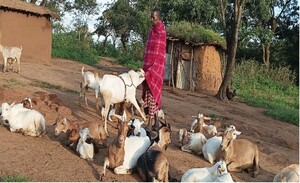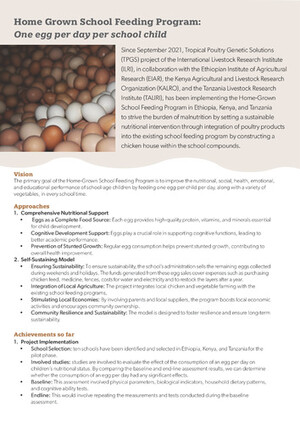
Integrating gender analysis in understanding dual-purpose cattle breeding practices in Nicaragua
Abstract
Dual purpose cattle production in mixed farming systems of Nicaragua is predominantly based on permanent grazing of naturalized grasslands, introduced pastures and crop residues. Milk production and animal offtake rates are low. Information to guide gender responsive interventions to improve livestock production is being generated through a collaborative project by the International Livestock Research Institute (ILRI), the International Center for Tropical Agriculture (CIAT), the National Agrarian University of Nicaragua (UNA), and the University of Natural Resources and life Sciences in Austria (BOKU). Gender disaggregated data on milk production of 447 animals on 59 farms from Camoapa in central Nicaragua have been collected over 8 months. The data shows that more than 40% of the households keep Brown Swiss crosses, however, male headed households keep significantly more Brahman and Holstein crosses than female headed households. The average daily milk production per animal is also significantly lower in female headed households (3.54±1.55kg) than in male headed households (4.14 ±1.87kg). Farmers are conversant with Artificial Insemination (AI), however the technology is not widely adopted. Reasons mentioned for low adoption include: high costs of service, need for repeat services, and unavailability of semen from desired breed-types (e.g. Brahman × Brown Swiss). Gender analysis revealed that the need for repeated services, which increased the costs of AI, is caused by a time mismatch between the animals' heat and the AI provision. These delays are in turn determined by the gender division of labour in livestock management: women are in charge of identifying when animals come into heat but have to wait for the men to call the AI service providers. Women head of households have difficulty accessing AI services and information altogether as they are less involved in cooperative groups and training on technologies related to cattle production. This reduces the effectiveness of AI in both male and female headed households. Practical training programs are required on reproductive management and the use of AI designed with gender responsive approaches.
Citation
Ojango, J., Urbina, M.M., Mora, M.A., Corrales, R., Oyieng, E., Galiè, A., Wurzinger, M. and Hoek, R. van der. 2016. Integrating gender analysis in understanding dual-purpose cattle breeding practices in Nicaragua. Poster prepared for the Tropentag 2016 Conference on Solidarity in a Competing World—Fair Use of Resources, Vienna, Austria, 19–21 September 2016. Nairobi, Kenya: ILRI.










